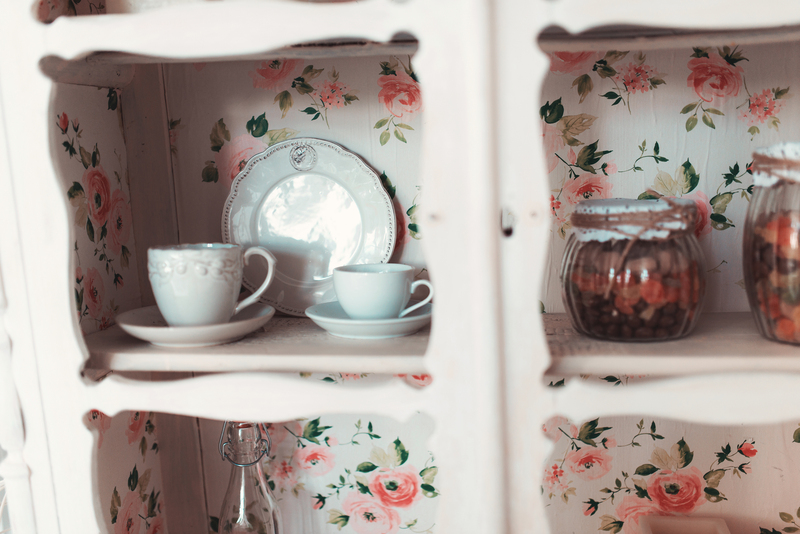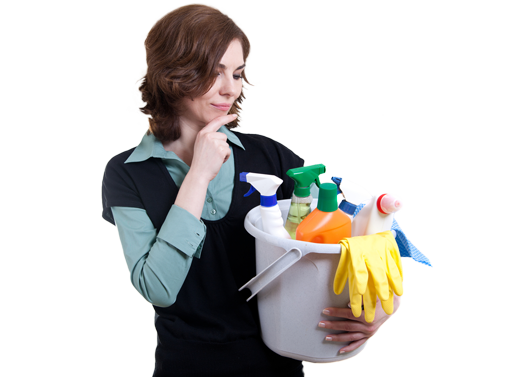Cleaning Floors: The Basics
Posted on 04/11/2024
```html
Keeping floors clean is essential for maintaining a healthy and aesthetically pleasing home environment. Whether you have hardwood, tile, carpet, or laminate floors, understanding the basics of floor cleaning can help you maintain their appearance and longevity. This article explores the fundamental steps and techniques for cleaning different types of floors, along with practical tips, pros and cons, and key takeaways.
Different flooring types require different cleaning techniques to avoid damage and ensure effective cleaning.
1. **Sweeping and Vacuuming:** Regularly sweep or vacuum to remove dust and debris. Use a soft-bristle broom or a vacuum with a hardwood floor attachment.
2. **Mopping:** Use a damp mop with a hardwood-specific cleaner. Avoid excessive water to prevent wood warping.
3. **Polishing:** Periodically polish with a quality product to maintain shine and protect the wood.
1. **Sweeping and Vacuuming:** Removing loose debris helps to avoid scratching the tiles.
2. **Mopping:** Use a mix of warm water and a mild detergent. For grout lines, use a brush.
3. **Sealing:** Periodically seal grout lines to prevent staining and moisture.
1. **Vacuuming:** Regularly vacuum to remove dirt and allergens.
2. **Spot Cleaning:** Blot spills immediately with a clean cloth. Use a carpet cleaner for stubborn stains.
3. **Deep Cleaning:** Periodically use a professional service or a rental carpet cleaner.
1. **Sweeping and Vacuuming:** Use a broom or vacuum to remove dirt.
2. **Mopping:** Use a damp mop with a laminate-specific cleaner. Avoid excess water.
3. **Avoid Waxing:** Laminate floors do not require waxing. Use a laminate polish if needed.
- **Read Manufacturer Guidelines:** Always refer to the flooring manufacturer's cleaning guidelines.
- **Use Proper Tools:** Invest in quality brooms, mops, and vacuums suited for your flooring type.
- **Regular Maintenance:** Frequent cleaning prevents dirt buildup and prolongs the life of your floors.
- **Address Spills Quickly:** Immediate clean-up prevents stains and damage.
- **Avoid Harsh Chemicals:** Use cleaners designed specifically for your flooring type to avoid damage.
Understanding the advantages and disadvantages of each flooring type can help you choose and maintain them efficiently.
**Pros:**
- Durable and long-lasting
- Aesthetically appealing
- Increases home value
**Cons:**
- Susceptible to moisture
- Requires regular maintenance
- Can be expensive
**Pros:**
- Water-resistant
- Durable
- Easy to clean
**Cons:**
- Cold underfoot
- Grout can stain
- Hard surface can be uncomfortable
**Pros:**
- Comfortable and warm
- Reduces noise
- Variety of colors and textures
**Cons:**
- Prone to staining
- Can harbor allergens
- Requires frequent vacuuming
**Pros:**
- Affordable
- Easy to install
- Resistant to scratches
**Cons:**
- Susceptible to moisture damage
- Can look less natural
- Cannot be refinished
- Clean floors regularly to maintain their appearance and longevity.
- Use appropriate cleaning methods for different flooring types.
- Immediate spot cleaning prevents permanent damage.
- Regular deep cleaning is essential for carpets.
- Avoid using excessive water or harsh chemicals on hardwood and laminate floors.
Having clean floors not only enhances the beauty of your home but also promotes a healthier living environment. Whether maintaining hardwood, tile, carpet, or laminate floors, using the right techniques and products is crucial. Regular maintenance and immediate attention to spills will keep your floors looking their best for years to come. By following these basic cleaning principles, you can ensure that your floors remain in optimal condition while adding to the overall charm of your home.
```
Cleaning Floors: The Basics
Keeping floors clean is essential for maintaining a healthy and aesthetically pleasing home environment. Whether you have hardwood, tile, carpet, or laminate floors, understanding the basics of floor cleaning can help you maintain their appearance and longevity. This article explores the fundamental steps and techniques for cleaning different types of floors, along with practical tips, pros and cons, and key takeaways.

Types of Floors and Cleaning Methods
Different flooring types require different cleaning techniques to avoid damage and ensure effective cleaning.
Hardwood Floors
1. **Sweeping and Vacuuming:** Regularly sweep or vacuum to remove dust and debris. Use a soft-bristle broom or a vacuum with a hardwood floor attachment.
2. **Mopping:** Use a damp mop with a hardwood-specific cleaner. Avoid excessive water to prevent wood warping.
3. **Polishing:** Periodically polish with a quality product to maintain shine and protect the wood.
Tile Floors
1. **Sweeping and Vacuuming:** Removing loose debris helps to avoid scratching the tiles.
2. **Mopping:** Use a mix of warm water and a mild detergent. For grout lines, use a brush.
3. **Sealing:** Periodically seal grout lines to prevent staining and moisture.
Carpeted Floors
1. **Vacuuming:** Regularly vacuum to remove dirt and allergens.
2. **Spot Cleaning:** Blot spills immediately with a clean cloth. Use a carpet cleaner for stubborn stains.
3. **Deep Cleaning:** Periodically use a professional service or a rental carpet cleaner.
Laminate Floors
1. **Sweeping and Vacuuming:** Use a broom or vacuum to remove dirt.
2. **Mopping:** Use a damp mop with a laminate-specific cleaner. Avoid excess water.
3. **Avoid Waxing:** Laminate floors do not require waxing. Use a laminate polish if needed.
Tips for Effective Floor Cleaning
- **Read Manufacturer Guidelines:** Always refer to the flooring manufacturer's cleaning guidelines.
- **Use Proper Tools:** Invest in quality brooms, mops, and vacuums suited for your flooring type.
- **Regular Maintenance:** Frequent cleaning prevents dirt buildup and prolongs the life of your floors.
- **Address Spills Quickly:** Immediate clean-up prevents stains and damage.
- **Avoid Harsh Chemicals:** Use cleaners designed specifically for your flooring type to avoid damage.
Pros and Cons of Different Flooring Types
Understanding the advantages and disadvantages of each flooring type can help you choose and maintain them efficiently.
Hardwood Floors
**Pros:**
- Durable and long-lasting
- Aesthetically appealing
- Increases home value
**Cons:**
- Susceptible to moisture
- Requires regular maintenance
- Can be expensive
Tile Floors
**Pros:**
- Water-resistant
- Durable
- Easy to clean
**Cons:**
- Cold underfoot
- Grout can stain
- Hard surface can be uncomfortable
Carpeted Floors
**Pros:**
- Comfortable and warm
- Reduces noise
- Variety of colors and textures
**Cons:**
- Prone to staining
- Can harbor allergens
- Requires frequent vacuuming
Laminate Floors
**Pros:**
- Affordable
- Easy to install
- Resistant to scratches
**Cons:**
- Susceptible to moisture damage
- Can look less natural
- Cannot be refinished

Key Takeaways
- Clean floors regularly to maintain their appearance and longevity.
- Use appropriate cleaning methods for different flooring types.
- Immediate spot cleaning prevents permanent damage.
- Regular deep cleaning is essential for carpets.
- Avoid using excessive water or harsh chemicals on hardwood and laminate floors.
Conclusion
Having clean floors not only enhances the beauty of your home but also promotes a healthier living environment. Whether maintaining hardwood, tile, carpet, or laminate floors, using the right techniques and products is crucial. Regular maintenance and immediate attention to spills will keep your floors looking their best for years to come. By following these basic cleaning principles, you can ensure that your floors remain in optimal condition while adding to the overall charm of your home.
```





